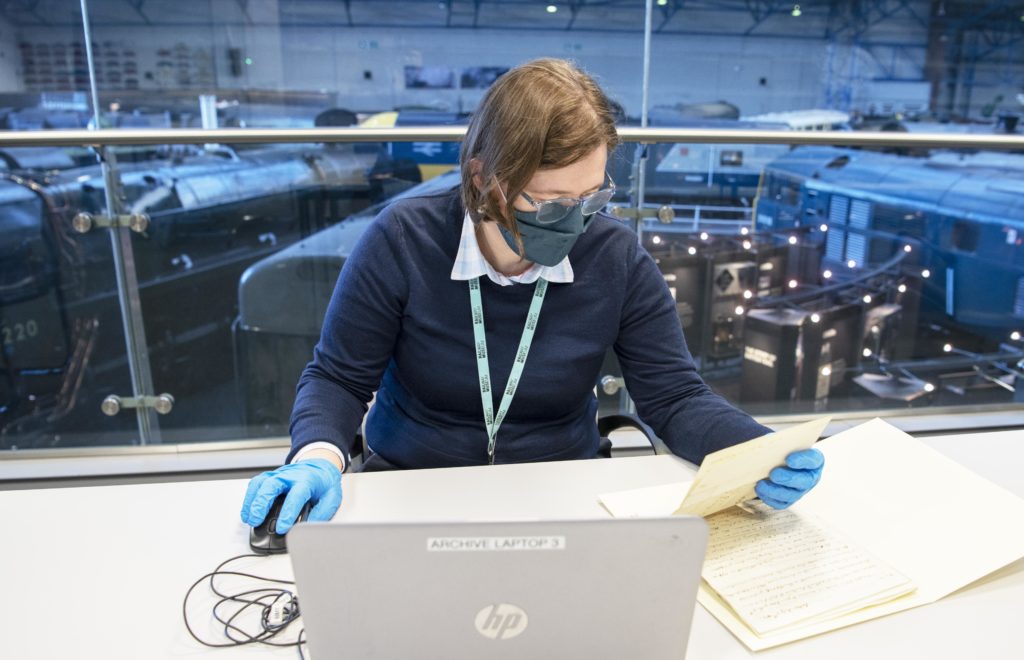On 27 September 1825 a small steam locomotive, now known as Locomotion No 1, left Shildon on a momentous journey. Pulling a mix of coal wagons, a carriage, and wagons full of passengers, this was the first steam-hauled passenger train on a public railway. Its progress was watched by huge crowds who sensed that the world had just changed. Now, as we approach the bicentenary, we are planning how we celebrate that historic day and the 200 years of railway history that have followed.
At the heart of our commemorations is Vision 2025, the hugely ambitious transformation of our museums in York and Shildon. These developments will allow us to bring our collection under cover for the first time in the museum’s history to preserve them for future generations and have many more railway icons on display. But, perhaps more importantly, they will allow us to tell better stories that reflect the strength and diversity of the global railway story, stories of the people involved in this ever-changing industry, stories that inspire the next generation, stories that truly reflect the past, present and future of the railways.
By the end of 2023 we will have opened Wonderlab: The Bramall Gallery in York, an exciting interactive space designed to encourage children and young people to think like engineers, and New Hall in Shildon. The latter will make Locomotion home to the largest undercover collection of heritage rail vehicles in the world, a permanent tribute to the world’s first railway town and the place often described by early commentators as “the cradle of the railways”. Following on from these developments, Central Hall will open in York in 2025. Providing level access across the National Railway Museum and linking all parts of the site together, Central Hall will also house a new gallery dedicated to the future of the railways.
Layered on top of our capital works will be a year-long programme of celebratory events running throughout 2025. At Shildon, located close to the point where Locomotion No 1 set off on its momentous journey, we will be running a multi-season programme of activities around the major holiday periods. We will build on our established and popular events and activities programme, bringing in both guest locomotives and operating vehicles from the national collection to show how the developments in 1825 went on to change the world. Talks and lectures are also being planned that will provide a more in-depth consideration of the railway story and provide a platform for current research to be debated and discussed.
The highlight of the year will be a celebratory festival to be held at both our museums. Starting in September and running through to the end of October this festival aims to highlight the significance of 2025 to the global railway story, leave visitors feeling inspired to learn more about the railways and the engineering that underpins the industry, and for everyone to see the relevance of science and engineering in our everyday lives. Plans are still at an early stage but we are keen to work with the modern rail industry as well as the heritage sector to deliver a must go-to event.
Of course, we are not alone in wanting to celebrate the bicentenary. Just as the early railway pioneers worked in partnership to achieve success, we will also work with our partners across the country to put on a wide-ranging series of events and activities. At Locomotion we are working with organisations across the original 26-mile route to put on a joint exhibition over summer focusing on firsts in the railway story. Displayed at the gateway hubs on the route and aimed at drawing an international audience, the multi-site exhibition at Locomotion, Darlington Railway Heritage Quarter and Preston Park in Stockton will feature a mix of objects belonging to the institutions involved and special loan items brought to demonstrate how the railways are intrinsic to the culture of this country. Activity to enhance this exhibition and to provide a wider context is also being planned, and a Festival Director has just been appointed by the S&DR Rail Heritage Board to plan and co-ordinate this work.
The S&DR Rail Heritage Partners are also keen there is a permanent legacy of the bicentenary celebration. Key to this is the establishment of a permanent walking and cycling route that tracks the original S&DR line from Witton Park in County Durham to Stockton. The provision of wayfinding, establishment of cycle hubs, and the installation of interpretation along the route will make it easy for visitors to access the Georgian railway landscape and learn more about the importance of the railways in this part of the country.
Place is, of course, central to the railway story. The S&DR came into existence to transport coal from the mines in Co. Durham to the port in Stockton and the railways permanently changed the landscape. It is right, therefore, that in the bicentenary year we celebrate place. We will primarily be doing this through a series of digital films that focus on some of the places intimately connected to the S&DR with the aim of encouraging people to explore the geography and history of the area. This too will provide a longer-lasting legacy for the bicentenary.
In 1825, the world came to the North East to see and celebrate the future of the rail industry; 200 years later we want to do the same. 2025 gives us the opportunity not just to commemorating the very real achievements of the past and reflect on the progress that has been made but to also look forward to the bright future of the rail sector. We look forward to sharing our plans in more detail with you in the coming months.
Header image: Locomotion No 1 at Stockton in the 1925 cavalcade. Find out more about this image.
The post 2025: Celebrating 200 Years of the Stockton & Darlington Railway appeared first on National Railway Museum blog.
